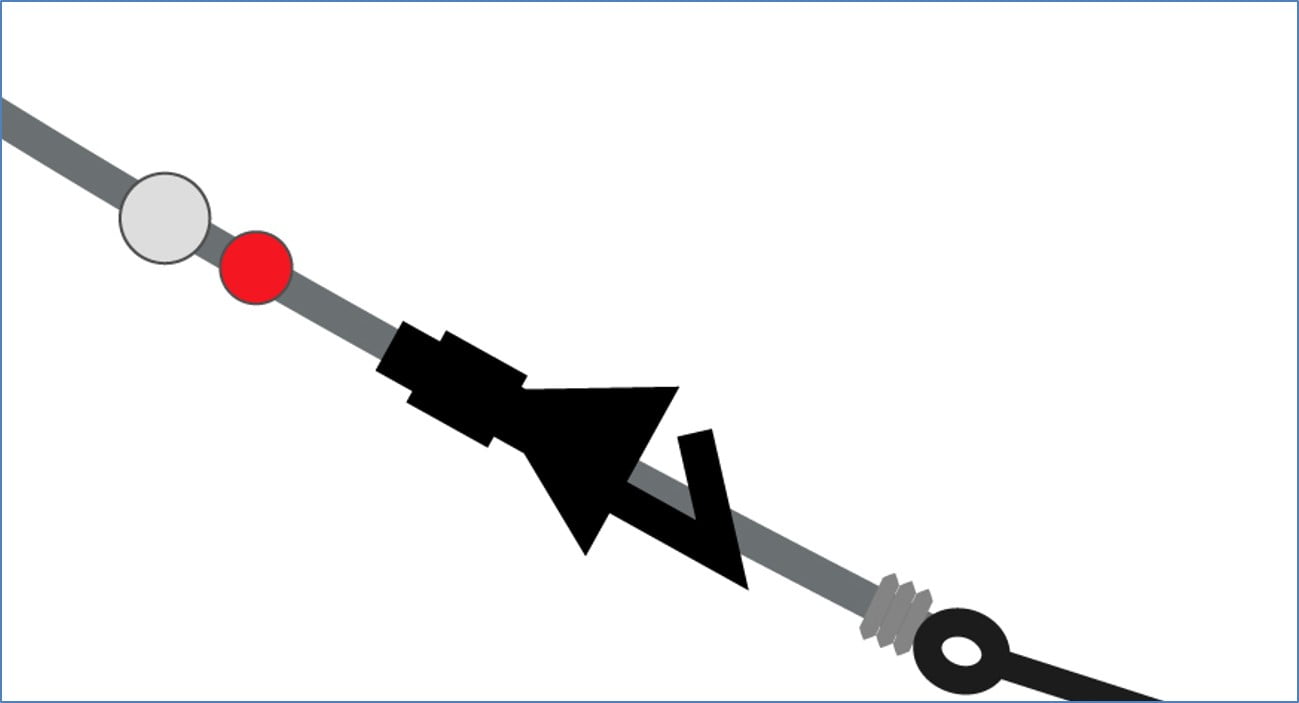The pulley rig is an important line setup for surf fishing. Yes, it may not the simplest nor the best bait presenting rig, but it is the optimal setup when the nearshore structure is full of rocks, weeds, and kelp.
With a smart design that allows the sinker to go upwards when something is on the hook or when retrieving the line, this rig proved to have the weakest snag ratio when all the other standard surf fishing rigs get tangled in mixed seabeds.
I don’t normally use the pulley rig during my surf fishing trips because it is not my favorite, and also because most areas where I fish are not that rocky. However, when I move to another town or when I’m about to fish a spot for the first time, I always make sure to gather the necessary components for the pulley rig in my tackle box.
I want to be able to set this rig whenever my terminal tackle finds it difficult to get out of the surf.
So what is the pulley rig, and what makes it great for surf fishing ? What is the required tackle and equipment to set up the pulley rig ? And how to use the pulley rig effectively from shore ?

What makes the pulley rig great for surf fishing ?
As mentioned earlier, the pulley rig is designed to minimize snags when fishing rough grounds rich in rock piles, grass, and kelp.
Simply put, when a fish strikes your offering and takes the bait, the pulley rig allows the fish’s weight to pull the sinker off the bottom and take it away from the threatening structures.
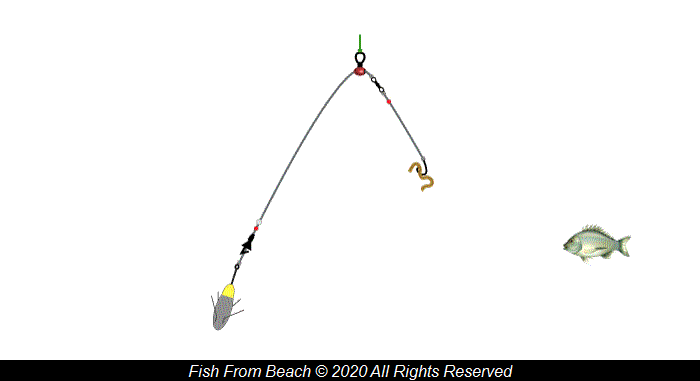
This is a very smart solution to avoid snags because right after the bite, the sinker gets into a position ahead of the fish minimizing the risk of your terminal tackle getting tangled in the bottom.
This is also beneficial during the fights as you will be directly connected to the hooked fish, thus have better control and leverage over it.
The other advantage of the pulley rig is the aerodynamic presentation that helps reaching a greater casting distance.
With the other surf fishing rigs, the bait and the sinker, which are the heaviest objects in most line setups, are usually 10 to 30 inches apart. This reduces the concentration of weight in your rig, hence the power of your cast.
Yes, when casting the bait, the more your weights are separated, the shorter the distance you are able to reach.
That’s why the pulley rig is one of the best setups when aiming for distance.
With a hook clipped to the impact shield just a couple of inches above the sinker, all the heavy objects in the rig unify offering a more powerful cast that goes further in the surf.
When to use the pulley rig for surf fishing ?
Well, with all the advantages that we mentioned in the previous paragraph, it is obvious that the pulley rig is the way to go when surf fishing mixed stony structures.
Also, when targeting species that hold at 100+ yards of the shoreline, the pulley rig provides the necessary casting power and the safety mechanism to retrieve the line all this distance without getting caught between the barnacles, weed, and rocks.
As I said earlier, do not make the pulley rig your best surf fishing rig. In most cases, the fish finder rig or the Carolina rig may be all that you need. However, make sure to have the necessary items for the pulley rig in case you notice a higher snag rate.
How to tie the pulley rig for surf casting ?
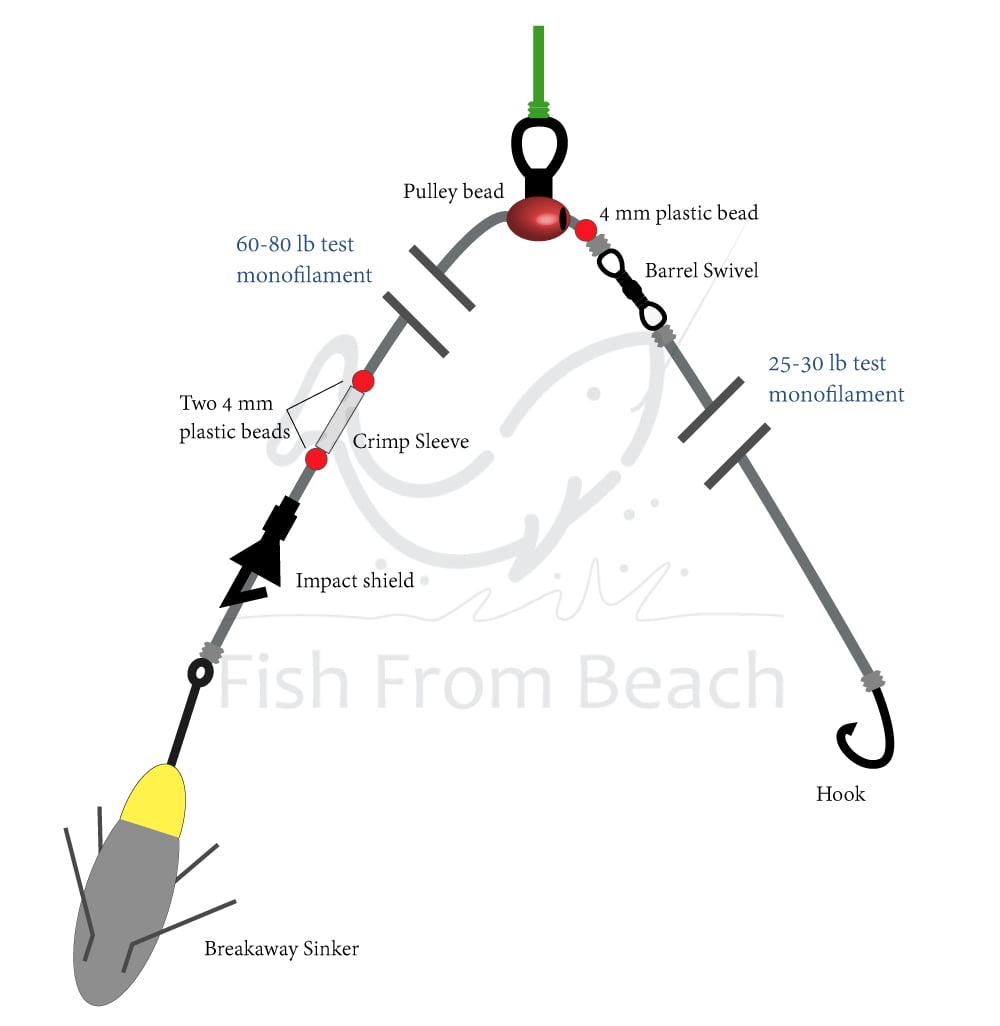
The pulley rig is made up of 2 leaders ( The rig body and the trace ) connected with a barrel swivel and added to the main line via a pulley system.
The pulley system should let the two leaders go left or right depending on which side is heavier.
In other words, when a fish bites or when you reel in the line, you want the rig body, in which the sinker is tied, to go off the bottom so it does not get snagged during the fight with the hooked fish.
Generally speaking, there are three options for the pulley system :
- A Gemini swivel
- A barrel swivel
- Or a pulley bead
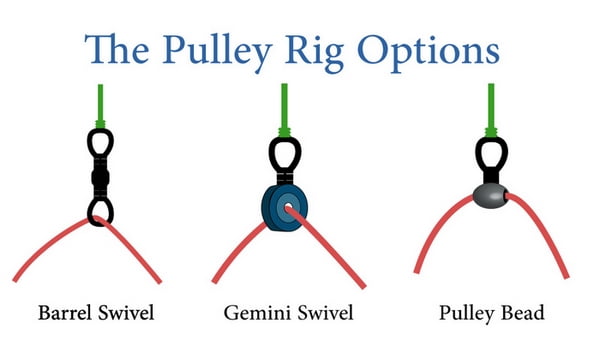
Personally, I use the pulley bead because it was specifically created for this rig and also because it allows a smooth running of the line during strikes.
That said, the barrel swivel is a good option too, and gives similar results. Plus, it is the easiest and most cost-effective (cheapest) way to go.
The length of your trace and rig body depends on the area where you are fishing and also on the species you are targeting.
For bottom-feeding fish like the reds and the flounder, it is better to keep your leaders short so the bait stays where you are more likely to get bites.
Having a too long rig body forces the trace, in which you thread the bait, to float far away from the strike zone and your offering may become unspotted.
Similarly, when fishing shallow waters or during low tide, keep your trace and rig body short so they stay in a rewarding depth.
The most important thing to remember here is to make the trace a few inches shorter than the rig body.
I see many surf anglers making the mistake of using traces that are half the size of the rig body. While this keeps them benefiting from the anti-snag feature of the pulley rig, it makes them also miss the extraordinary casting distance that this setup offers.
Remember, you want your heavy objects (the bait and the sinker) to be close in order to unify your casting power and go further in the surf.
When your bait and sinker are far away, your casting power gets distracted and as a result, you reach an average distance.
In turn, having a trace longer than the rig body creates a slack line in your setup. This also hurts the casting distance because you will receive more resistance from air and wind during the flight, which makes your tackle go slower and drop sooner into the water. Also, a longer trace makes it difficult to keep the hook clipped to the rig body during the casting phase.
So make sure to keep your trace just 3 to 4 inches shorter than the rig body. Personally, I use traces ranging from 28 to 35 inches, while my rig bodies are about 31 to 40 inches long.
I connect a 2/0 – 5/0 circular hook to the trace and then I tie the free end of the trace to a barrel swivel using a Palomar or Uni knot.
On the other end of the barrel swivel, I tie the rig body with a breakaway sinker at the end of it.
I use the breakaway sinkers because they provide a firm grip at the bottom while staying safe from snags thanks to their wire spikes that snap open when retrieving the line.
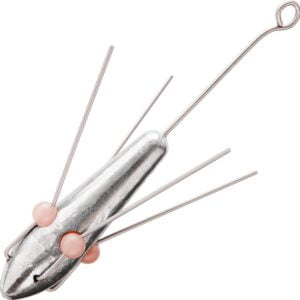
Breakaway Sinker
A few inches above the sinker, I connect a beat release system to which I join the trace during the casting phase.
A beat release system is a simple mechanism that keeps your hook clipped to your rig body during the cast and then releases it systematically after entering the water.
The most common options for this are the impact shield and the breakaway imp. I invite you to watch this youtube video for more information on how the beat release systems work.
Credit : Dave Brown
For my pulley rigs, the impact shield is the only option I use because of its 100% bait-dropping rate, and also because of its aerodynamic shape that helps my casting distance.
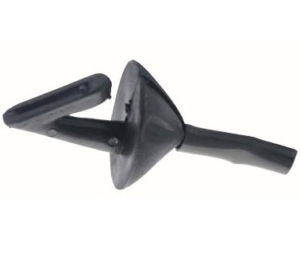
Impact Shield
Just above the impact shield, make sure to add a stopper in order to keep the beat release system close to your sinker. Remember, you want your heavy objects to stay concentrated and close to each other in order to maximize your casting distance.
A split shot sinker is a popular option for this, but I prefer crimp sleeves for their aerodynamic shape and increased durability.
Finally, make sure to add two 4-5 mm beads around the stopper for more protection and also one above the barrel swivel that connects your trace to the rig body.
The beads are also used to avoid the rig body or trace going entirely through the pulley system and thus losing both of them. So make sure your beads are larger than the hole of your pulley system.
I know I’m terrible at explaining how to tie rigs 😀 So make sure to give another look at the picture above in order to have a clear idea about the right place of each item.
Note (*): If you make a purchase through links from this website, we may get a small share of the sale from Amazon or other similar affiliate programs.
Surf Fishing Survey
Help us provide you with better content by answering simple questions about your surf fishing experience and knowledge.
We will put the collected responses together and turn them into valuable information that will help you catch more fish from shore 😉
Note: No personal information will be collected with your answer.

